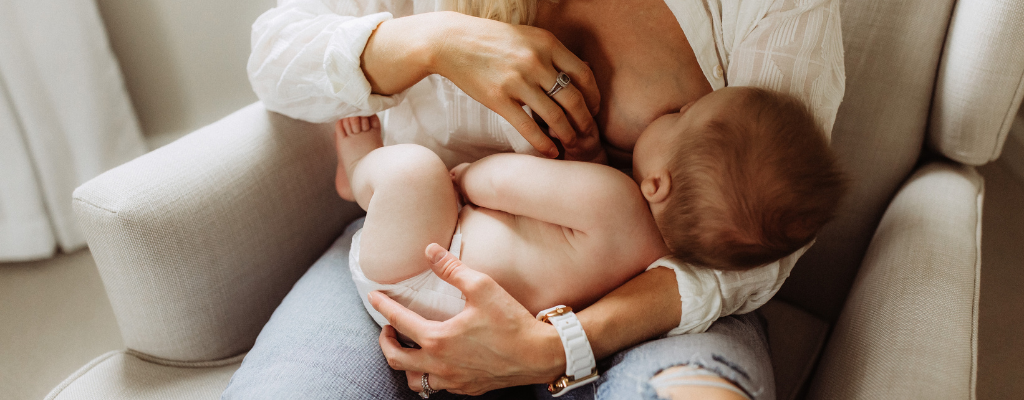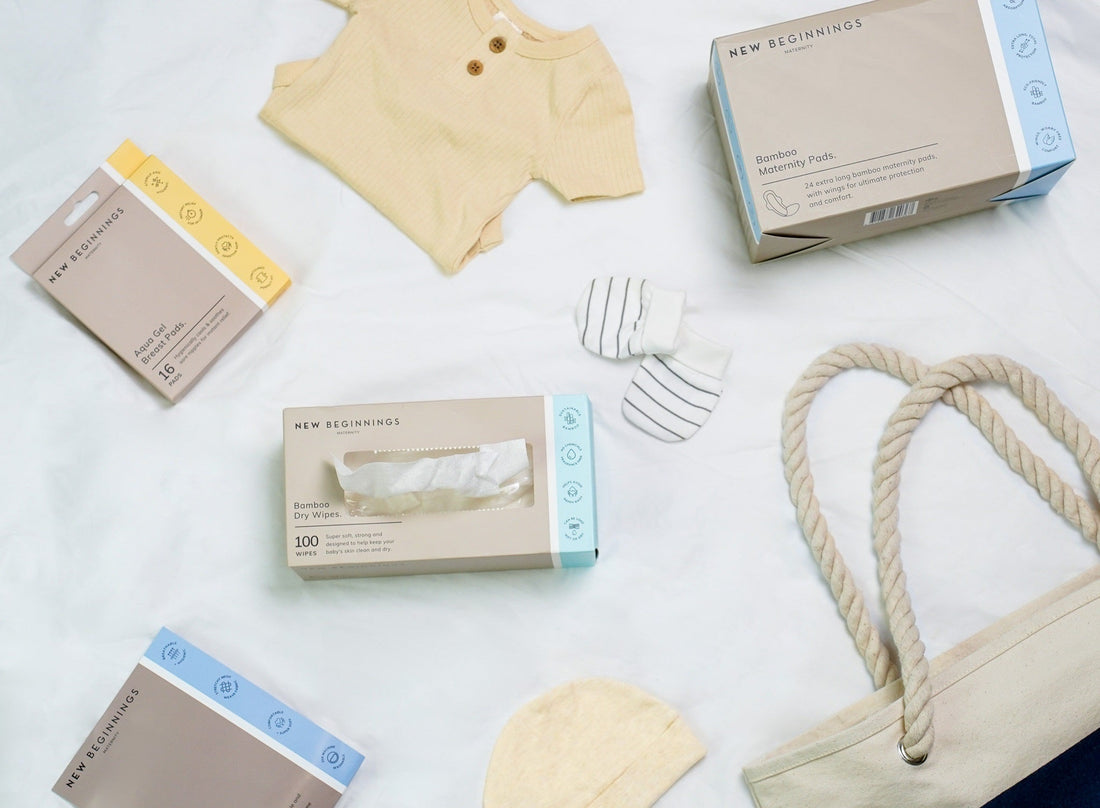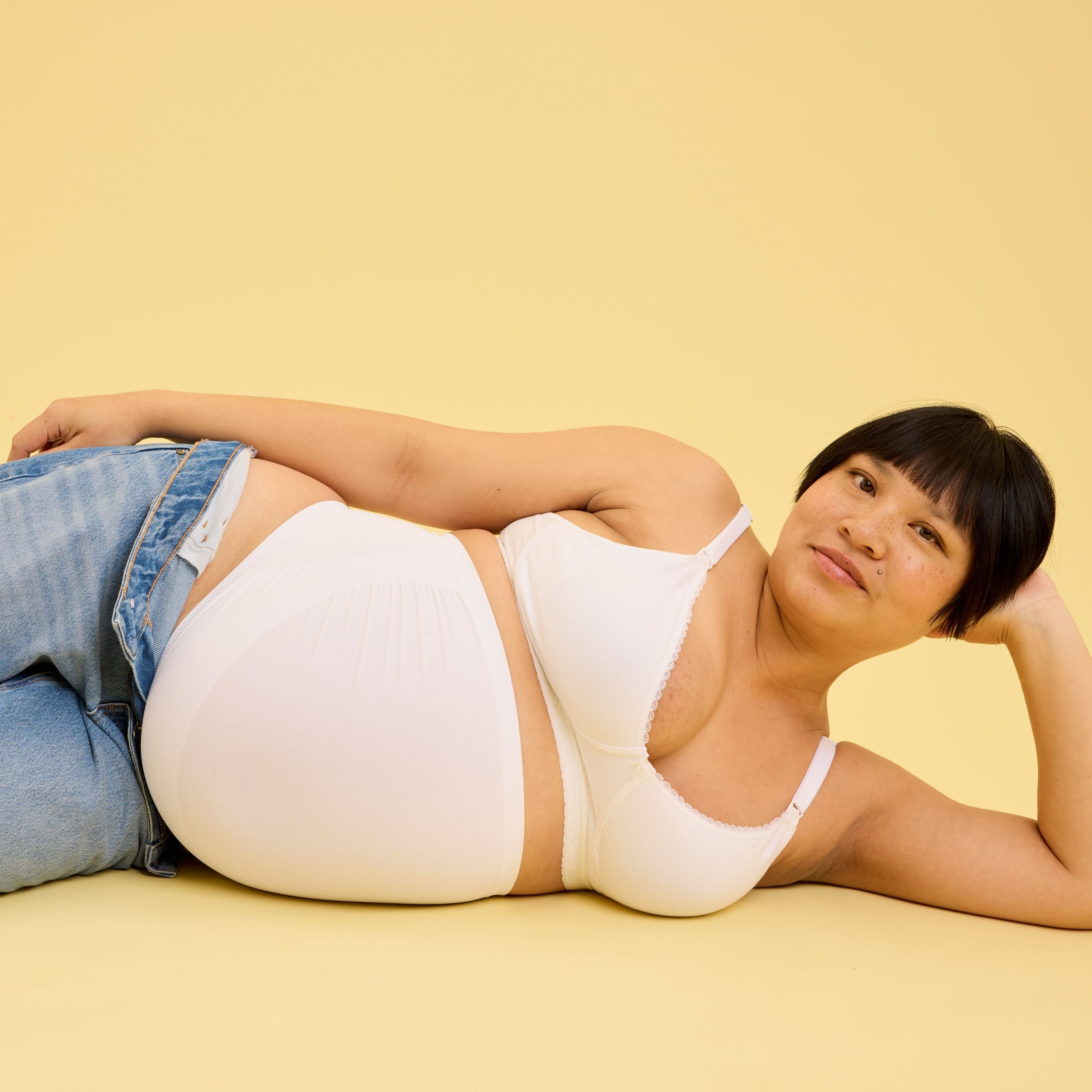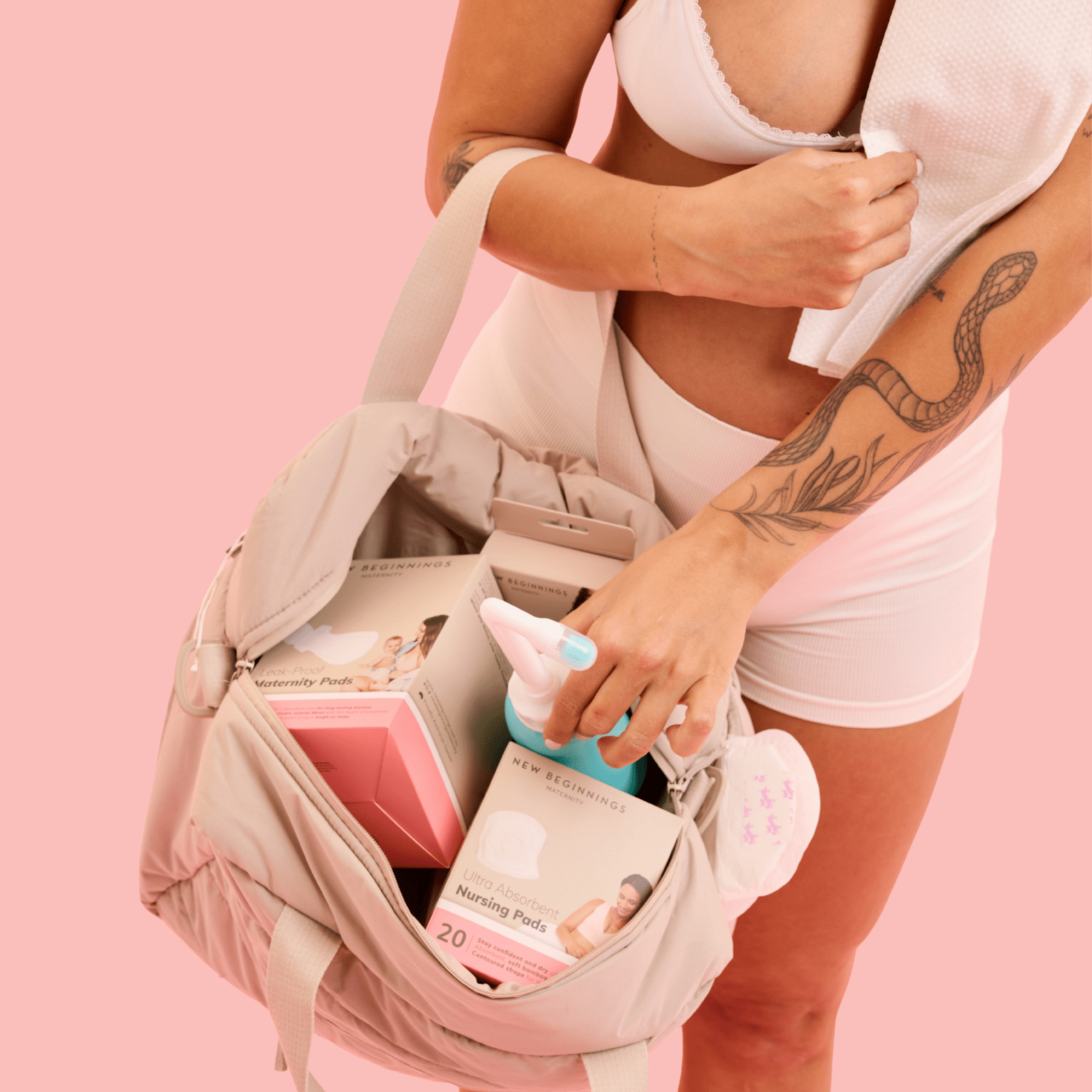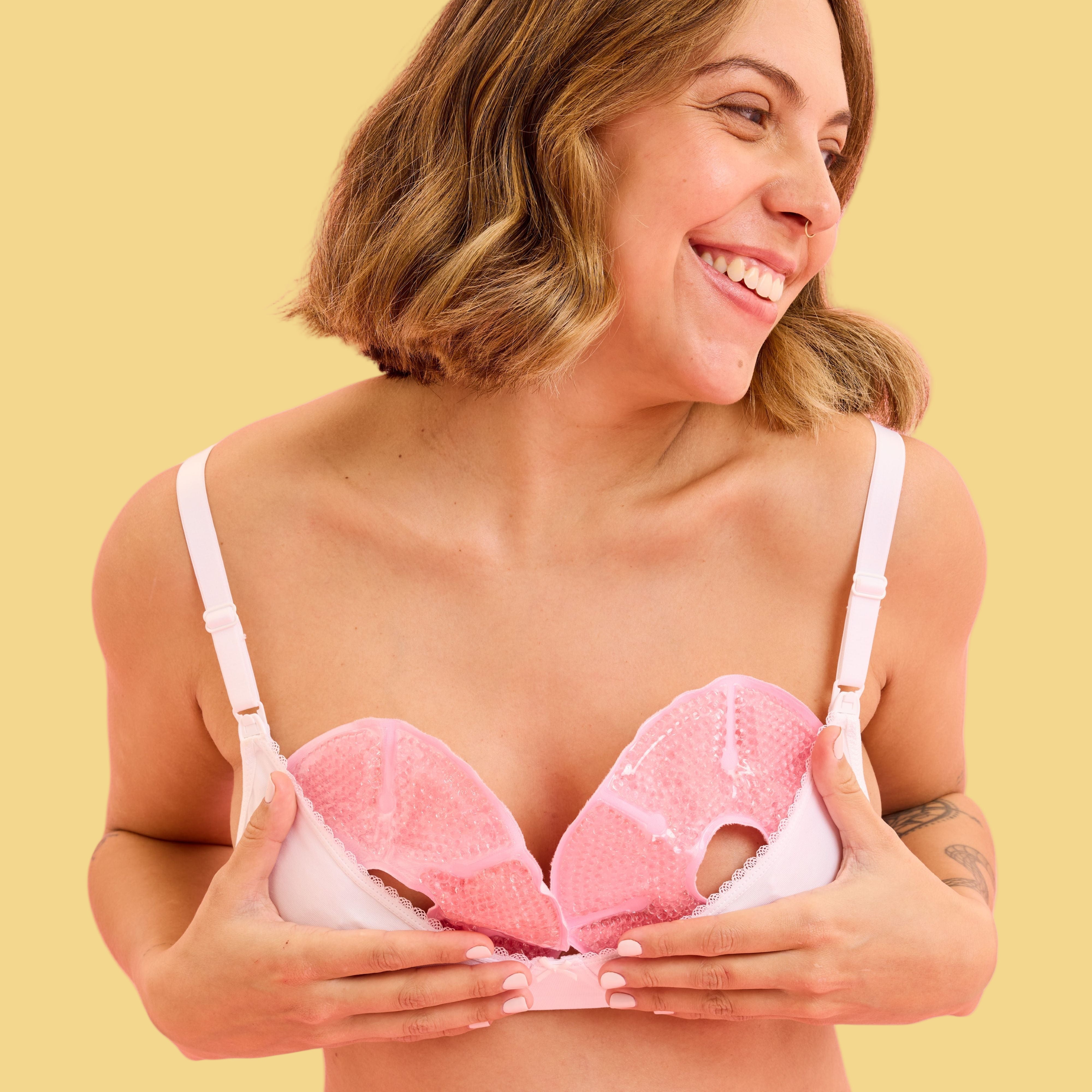Maternity Blog & News | New Beginnings
Essential Care Packs for New Mums: Postpartum, Pregnancy, and Breastfeeding
Whatever stage you find yourself, new mum care packs can help you navigate this beautiful yet demanding phase. In this blog, we go through essential care packs to support you during each stage of pregnancy, postpartum and beyond.
Learn moreBreast Pumps: Comparing the New Beginnings Breast Pumps
To help you choose the best breast pump for your needs, we've created a comparison table.
Learn moreA parent's guide to UV sterilisers
There’s a wide range of sterilisers on the market. In this article, we will explore the world of UV sterilisers and explain why they are our number one choice for maintaining sterile baby bottles and accessories.
Learn moreHow to put yourself first this Mother’s Day
Celebrate Mother’s Day, every day. One day a year people everywhere shower their mums with cards, gifts and little celebrations to remind them how wonderful we all think they are. But why should you limit yourself to one day a year when you’re a mother 24/7, 365 days a year? This year we’re encouraging mums, carers, guardians and anyone playing that vital role in a child’s life, to take some time for themselves and practice some good old self care and love. Every family is different. We recognise that there is no single definition of what it means to be a mother. A mum can come from any background, ethnicity, or sexual orientation. They can be single or in a relationship. They can work full-time or be a stay-at-home parent. A mum can choose to have children biologically or adopt, be young or old, and identify as a parent whichever way she chooses. And we acknowledge that not all mums may identify as a ‘she’. So however you choose to parent, we applaud you! You’re doing a great job. Self care for mothers. What is it and what does it look like? We hear this word a lot these days, and while it’s all well and good to hear it, what does it mean and how can you start doing it? Self-care is the practice of taking intentional actions to improve your physical, emotional, and mental well-being. It involves taking care of yourself through activities that promote relaxation, stress reduction, and self-improvement. Here are 5 ways you can start practicing self care today: Take time for yourself: Set aside some time every day to do something that you enjoy. It could be anything from reading a blog like this one, to taking a walk outside. Get enough sleep: It's essential for your mental health and physical wellbeing to get adequate sleep. While it feels nearly impossible to do this when you have a newborn or toddler, asking your family to take the kids for a few hours when needed so you can get some shut-eye is sure to make a world of difference. Eat a balanced diet: While sometimes very challenging, eating well can have a significant impact on your mood and energy levels. So instead of just prepping your kid’s meals each week, pack yourself a lunchbox too! Fill it with all of the nutritious foods you want your kids to eat more of too – they love to follow in your footsteps! Exercise: While running around after the kids does technically qualify as exercise, it’s the time you take for yourself to exercise which boosts your mood and reduces stress levels. Even if it’s just a few minutes of physical activity each day, you’re mind and body will thank you. Connect with other mums: Being around others who understand and relate to your challenges can provide social support and validation, reduce feelings of isolation and offer opportunities to learn coping strategies. Additionally, spending time with like-minded individuals can boost self-esteem, promote relaxation and provide a much-needed break from the demands of motherhood. So what are you waiting for? Pick up that phone and start making plans! Retail therapy: When was the last time you bought something for yourself? If you’re taking a few minutes to think, then it’s time to get that cart firing! Buying yourself little things like jewellery, clothes or even takeaway will give you a psychological and emotional boost. Ready to start shopping? Why not start at New Beginnings where you can find everything you need as a new mum. At New Beginnings, we're committed to supporting mothers and families from pregnancy onwards and want to take this moment to wish you all a very happy Mother's Day, today, tomorrow and every single day of the year! Finding yourself Googling everything from boobs and bums to bubs and bibs? Visit New Beginnings, where you’ll find a range of helpful articles, products and tips for navigating this new chapter of your life - mummahood.
Learn moreWill I ever stop crying over everything?
Will I Ever Stop Crying Over Everything? Understanding Emotional Ups and Downs During Pregnancy For many expectant mums, crying over seemingly small things can become a frequent occurrence, leaving them wondering if they will ever stop feeling this way. And while it’s totally normal and nearly every mum will experience it, it’s helpful to know why it’s happening and how you can manage it. Why am I feeling so emotional? Pregnancy is a time of intense hormonal changes. Your body is producing more estrogen and progesterone than usual, which can affect your moods and emotions. These hormones can cause you to feel more fearful, anxious, and bring on sudden crying spells. It can also cause big mood swings, taking you from feeling deliriously happy one minute, to deeply sad the next. Whenever you feel it, however you feel it, just know that it won’t last, and when you start sobbing during infomercials, take comfort in knowing you’re not alone. Will being so emotional affect my baby? Many mums worry if their sudden bursts of emotions are harming their baby. The short answer is no. But it's important to remember that taking care of your emotional well-being is just as important as taking care of your physical health during pregnancy. How to conquer crying spells? Crying spells can be challenging to manage, but there are some things you can do to help reduce their frequency and intensity. Sleep One of the most important things you can do is get enough sleep. Pregnancy can be exhausting, and lack of sleep can make your emotions more volatile. Stay active Staying active and exercising regularly can also help you feel more balanced and reduce stress. Talk to someone Talk to your partner, friends, or family members about how you're feeling. Sharing your emotions can help you feel less alone and provide a sense of support and understanding. Getting your ducks in a row When you’re feeling overwhelmed it helps to make a list of everything you need, and tick those things off one by one. We offer a huge range of resources as well as maternity essentials, breast care and feeding products that can help you cope with how you feel now, and prepare for what’s to come. In summary, experiencing emotional ups and downs during pregnancy is completely normal and won’t last forever. But if you do find yourself not coping, please reach out and speak to your doctor. They can assist with professional guidance to help you navigate your way through your pregnancy. Finding yourself Googling everything from boobs and bums to bubs and bibs? Visit New Beginnings, where you’ll find a range of helpful articles, products and tips for navigating this new chapter of your life - mummahood.
Learn moreDo I Really Need a Breast Pump?
Breast pumps - whether manual, electric, single or double, can be one of the best purchases you ever make as a new mum. Not only are they great for producing and storing breast milk, but they can also help in a number of other ways: Here's why you might need a breast pump: 1. Breast pumps help you produce more milk. The truth of the matter is, you will never know how your breasts will handle breastfeeding and milk production until it happens. Even if this isn’t your first baby, every birth is different. So if you’re finding you’re not producing enough milk, a breast pump can help stimulate your breasts and nipples to move things along[1]. 2. Breast pumps save your breasts from engorgement. Breast pumps can be used to help manage oversupply by removing excess milk from the breasts. 3. Breast pumps help prevent mastitis. Oversupply can increase the risk of developing mastitis, an infection of the breast tissue that is incredibly painful. Regularly emptying the breasts using a pump can help avoid this. 4. Breast pumps give you back some time! The best part about breast pumps is you can express your milk and store it for future use, meaning you can actually share the feeding and get yourself out of the house for some much needed ‘me’ time[2]. How do you know if you should buy a breast pump? Some mums prefer to wait until after giving birth to see how breastfeeding goes before investing in a breast pump, while others like to have a pump on hand in case they need it. Whether you’re from column A or column B, you’ll still want to choose a pump that’s right for you, so let’s take a look at what’s out there. There are three main types of breast pumps on the market: manual, electric and new to the category, wearable breast pumps. Each serves a purpose and works well for different people in different situations. Let’s take a closer look… What are Manual breast pumps? Manual breast pumps are the simplest and most affordable option. They are operated by hand, usually with a lever or handle that you can squeeze to create suction. The New Beginnings Silicone Manual Breast Pump is perfect for mums on the go. Made from 100% food-grade silicone, this queen of manual pumps is soft, silent and dishwasher-safe. What more could a gal ask for?! What are Electric breast pumps pumps? Electric breast pumps use an electric motor to create suction and extract milk from the breast. They are typically more powerful and efficient than manual pumps, and are a good choice for mums who need to pump regularly or for extended periods of time. Electric pumps can be bought as either single or double. Single electric pumps extract milk from one breast at a time, while double electric pumps can extract milk from both breasts simultaneously[3]. Double electric pumps are generally faster and more efficient than single pumps, making them a good choice for mums who need to pump frequently or for twins or multiples. The New Beginnings double electric pump has micro computer technology embedded within the motor to ensure it provides the perfect suction which dramatically reduces breastfeeding time by up to 50%! Check out our breast pump shopping guide for more tips on how to choose the best breast pump. Manual Vs Electric Vs Wearable Breast Pumps Manual Breast Pump Electric Breast Pump Wearable Breast Pump Operated by hand. You create suction with a handle or squeeze body. Powered by a motor for consistent suction and faster expression. Completely hands-free and cord-free sits inside your bra for quiet, discreet pumping. Best for occasional use, quick relief, or travel. Great for daily or exclusive pumping and building supply. Perfect for multitasking mummas who need to pump on the go (or while eating toast one-handed). Small, lightweight, and super quiet. Some noise from the motor, but efficient and powerful. Ultra quiet and compact. No cords, no bottles hanging off you. Lower cost and easy to clean. Ideal as a backup or starter. More expensive, but worth it for frequent pumpers. Higher price tag, but convenience and freedom are priceless. One breast at a time. Single or double options for faster pumping. Typically double - express both sides while staying mobile. No charging or cords, just you and your pump. Requires power or battery; most are rechargeable. Rechargeable and wireless wear, pump, and move freely. Shop the Silicone Manual Pump Shop the Double Electric Pump Shop the Wearable Breast Pump What will happen if I don’t pump my breasts? Long story short, if you don’t use a pump it’s not the end of the world, but you could experience engorgement and mastitis if you produce a lot of milk, and you won’t have the flexibility of sharing the responsibility of feeding bub. Will I lose my supply if I don’t pump? If you're not pumping or breastfeeding regularly, you may experience a decrease in milk supply over time. Milk production is a supply-and-demand process, so if milk is not regularly removed from the breast, the body may produce less milk. What's the longest I can go without breast pumping? This depends on a few factors, such as your individual milk supply, how long it has been since you last pumped or breastfed, and how often you usually pump or breastfeed. In general, it's recommended that you empty your breasts at least 8-12 times in a 24-hour period to maintain your milk supply. However, this can vary from person to person, and some women may be able to go longer between pumping or breastfeeding sessions without experiencing a decrease in milk supply[4]. Do I need to sterilise my breast pump? Yes, yes and yes! It's important to sterilise your breast pump regularly to ensure that it's clean and free from harmful bacteria. This is especially important if you're using a breast pump to collect milk for a newborn or a baby with a weakened immune system. And while there’s so many reasons to invest in one of these nifty breast pumps, remember that you should always consult with your doctor or talk to a lactation nurse if you’re having any issues with your breasts or supply. Ready to take the plunge and buy your breast pump? Shop our full breast pump range. Finding yourself Googling everything from boobs and bums to bubs and bibs? Visit New Beginnings, where you’ll find a range of helpful articles, products and tips for navigating this new chapter of your life - mummahood. Before You Buy Your Ultimate Guide to Choosing a Breast Pump Open vs Closed System Breast Pumps Wearable Wonder: The Next Generation of Milk Collection
Learn moreManaging back pain during pregnancy
Back pain is one of those things you can add to your ‘cons’ list during pregnancy. The good news? There are things you can do to help ease back discomfort during pregnancy. We’ve cut it down to 6 best tips to manage back pain during pregnancy.
Learn moreCan I eat that?
Welcome to our first edition of Boogle Blog for 2023! To bring in the new year with a bang, we’re talking about food and what you can and can’t eat (well, should avoid) when you’re pregnant. Being new to pregnancy can be stressful enough without having to worry about everything you eat, drink and put in your body. But to make things easier, we’ve compiled a list of things you should eat more of, and some you should steer clear of. But before we go into all of that, it helps to know why we need to be cautious at this time of the pregnancy, and even when you’re breastfeeding. When you’re pregnant you need more of certain nutrients like protein, iron, folic acid, iodine and calcium. Your immune system is also much lower when carrying a baby, which makes it harder to fight things like the common cold or infections caused by bacteria that can be found in some food. That’s why it’s super important to eat enough good stuff (in-between the hot chips and ice cream), and avoid the stuff that could be bad. So, let’s start with the good… Fruit & vegetables If you’re a fruit and veggie kinda gal, then you’re in luck because these magical foods provide vitamins and minerals, as well as fibre, which helps digestion and can help prevent constipation. According to most studies, they suggest we eat at least 5 portions of a variety of fruit and vegetables every day – these can include fresh, frozen, canned, dried or juiced. A few to add to your shopping list are: Legumes Legumes are great plant-based sources of fibre, protein, iron, folate, and calcium — all of which your body needs more of during pregnancy. Sweet potatoes Not only delicious, but sweet potatoes are rich in beta carotene, a plant compound that is converted into vitamin A in your body. So mash, boil, bake or fry those babies up! Greens Broccoli and dark, green vegetables, such as kale and spinach, provide a number of nutrients that your body +1 need. Benefits include fibre, vitamin C, vitamin K, vitamin A, calcium, iron, folate, and potassium. Meat and protein Lean beef, pork, and chicken are great sources of high-quality protein. Beef and pork also provide your body with iron (you’ll need more of this during pregnancy due to your blood volume increasing), choline, and B vitamins. Berries Berries such as strawberries, raspberries and all the delicious dark red ones contain a lot of goodness like water, healthy carbs, vitamin C, fiber, and antioxidants. Try popping them in your water to fancy-things-up a little. Avocados These popular fruits are high in fiber, B vitamins (especially folate), vitamin K, potassium, copper, vitamin E, and vitamin C. Like we needed another excuse to love them! Fish & seafood While some fish and seafood are in the ‘things to avoid’ list, there are some that are actually good for you to eat while pregnant. The trick is to eat seafood that is high in healthy fats but low in mercury. The following are lower in mercury, so you can eat around 340 grams per week: Canned tuna Cod Herring Salmon Shrimp Tilapia Trout Foods to avoid These foods may have bacteria in them that can be harmful to your baby. So best to avoid all together: Raw (uncooked) or rare (undercooked) fish or shellfish, like sushi or raw oysters Soft cheeses (like feta, Brie, and goat cheese), unless they are pasteurised Raw or rare meats, poultry, or eggs (hard boiled eggs are fine) Unpasteurised juices or milk Lunch or deli meats, smoked seafood, and hot dogs – unless they are heated until steaming hot Prepared salads like ham salad, chicken salad, or seafood salad Raw sprouts, including alfalfa, clover, radish, and mung bean sprouts And of course there’s alcohol, caffeine (don’t worry mumma, you can still have around 1-2 cups per day), and super sugary drinks that are all on the no-go list. At the end of the day, you know your body, and everything just needs to be in moderation. But, if in doubt, it’s always best to consult your Dr. That’s what they’re there for! Finding yourself Googling everything from boobs and bums to bubs and bibs? Visit our New Beginnings website, where you’ll find a range of helpful articles, products and tips for navigating this new chapter of your life - mummahood.
Learn moreBaby & pregnancy-friendly festive activities
Ho, ho, ho! Welcome to the last edition of our Boogle Blog for 2022, where we’re gifting you some holiday ideas that you can enjoy while pregnant or with a newborn. Yes it’s true, Christmas and NYE can be a bit hectic when you’re pregnant or sleeping only 45 seconds most nights with a bub. But, while prawns and champagne might be off your list, we’re here to tell you there are some things you can do to put some jingle in your bells. First things fist, relax A word we’re definitely not used to hearing over the holiday season but one that you can milk right now. Yes, it’s important for you to pass on the chores and opt for the couch. This time of the year is about keeping you and bub healthy and happy, so if that means being waited on, so be it! Travel right Whether you’re heading away for the holidays or staying over at a family or friend’s house, packing for a baby can be challenging. Our advice? Stock up on travel-friendly products that will make your life 100 times easier. Things like a portable steriliser that helps you eliminate 99% of germs and bacteria wherever you are, a double electric breast pump that lets you pump on the go, New Beginnings dry wipes for any spills or mishaps along the way and if you’re breastfeeding, get yourself some Aqua Gel cooling breast pads. These amazing things work without needing a fridge - just peel and apply! Gift yourself a break If you’re pregnant with your first baby, make this Christmas all about you. After all, once your little one is here you’ll be spending every holiday season running around after them. Why not organise a merry movie night with your partner, friends or kids, order take out so there’s no need to cook and schedule a daily nap. Swap midnight for midday If you’re pregnant, staying up until midnight to ring in the New Year is a hard task. Why not move things to noon? You can then do a countdown with the kids, or just with family and friends and get to bed early! Sounds good to us. Fake it till you make it If you’re not drinking booze during the break, it’s time to get your mocktail on! Grab yourself a list of yummy drinks and get mixing! And when it’s champagne time, try clinking glasses with sparkling apple juice. Swap travel for guests Travelling when you’re pregnant or with a little one can be hard work. If you’re pregnant it can be uncomfortable and you’ll need plenty of pee stops. And with a newborn… well you just never know what to expect. This year try asking people to come to your house, that way you can stay put and have everything you need, all around you. Including your toilet. From all of us at New Beginnings, we wish you a very happy holiday season and a wonderful new year full of love, laughter and pitter patter. Finding yourself Googling everything from boobs and bums to bubs and bibs? Visit our New Beginnings website, where you’ll find a range of helpful articles, products and tips for navigating this new chapter of your life - mummahood.
Learn more